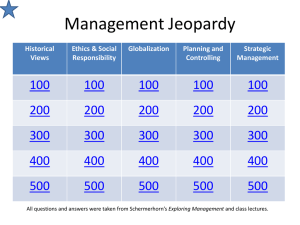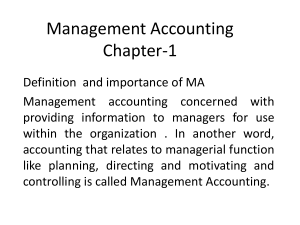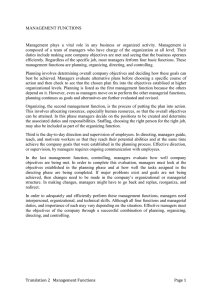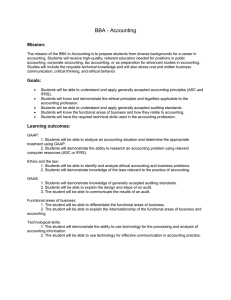Garrison Noreen Brewer 11th Edition Chapter 1
advertisement
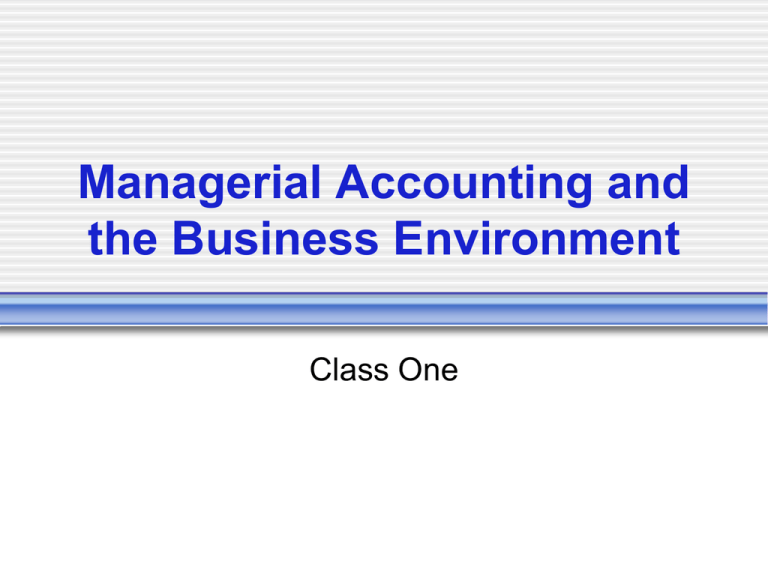
Managerial Accounting and the Business Environment Class One Comparison of Financial and Managerial Accounting Financial Accounting Managerial Accounting External persons who make financial decisions Managers who plan for and control an organization Historical perspective Future emphasis 3. Verifiability versus relevance Emphasis on verifiability Emphasis on relevance for planning and control 4. Precision versus timeliness Emphasis on precision Emphasis on timeliness 5. Subject Primary focus is on the whole organization Focuses on segments of an organization 6. GAAP Must follow GAAP and prescribed formats Need not follow GAAP or any prescribed format Mandatory for external reports Not Mandatory 1. Users 2. Time focus 7. Requirement Strategy A strategy is a “game plan” that enables a company to attract customers by distinguishing itself from competitors. The focal point of a company’s strategy should be its target customers. Customer Value Propositions Customer Intimacy Proposition Understand and respond to individual customer needs. Operational Excellence Proposition Deliver products and services faster, more conveniently, and at lower prices. Product Leadership Proposition Offer higher quality products. Work of Management Planning Directing and Motivating Controlling Planning Identify alternatives. Select alternative that does the best job of furthering organization’s objectives. Develop budgets to guide progress toward the selected alternative. Directing and Motivating Directing and motivating involves managing day-to-day activities to keep the organization running smoothly. Employee work assignments. Routine problem solving. Conflict resolution. Effective communications. Controlling The control function ensures that plans are being followed. Feedback in the form of performance reports that compare actual results with the budget are an essential part of the control function. Planning and Control Cycle Formulating longand short-term plans (Planning) Comparing actual to planned performance (Controlling) Decision Making Measuring performance (Controlling) Begin Implementing plans (Directing and Motivating) Organizational Structure Corporate Organization Chart Board of Directors President Sales Personnel Vice President Operations Chief Financial Officer Treasurer Controller Code of Conduct for Management Accountants The Institute of Management Accountant’s (IMA) Standards of Ethical Conduct for Practitioners of Management Accounting and Financial Management have two major parts offering guidelines for: Ethical behavior. Resolution for an ethical conflict. Ethical Behavior Four broad areas of responsibility: • Maintain a high level of professional competence • Treat sensitive matters with confidentiality • Maintain personal integrity • Be objective in all disclosures Resolution of an Ethical Conflict • Follow established policies. • For unresolved ethical conflicts: Discuss the conflict with immediate superior. Make reference to the Sarbanes-Oxley Act passed by Congress in 2002 in part to give legal protection to those reporting corporate misconduct. Consider the board of directors or the audit committee. The last resort is to resign.
